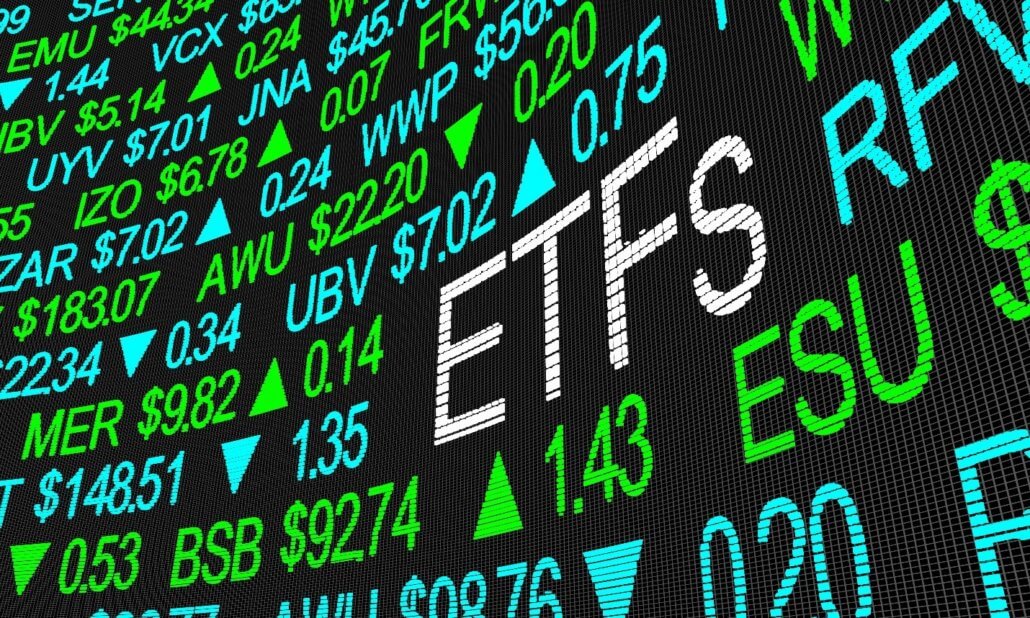An exchange-traded fund (ETF) is a fund that users can trade on an exchange like a stock. It implies they can be purchased and sold during the trading day (unlike mutual funds). ETFs, give you a way to buy and sell a basket of assets without purchasing all the components individually. Significantly, they often have lower fees than other types of funds. Depending on the type, ETFs have different levels of risk. Notably, exchange-traded funds are more cost-effective and more liquid than mutual funds.
For instance, it can track anything, the price of an individual commodity or a large and diverse collection of securities. Furthermore, ETFs can even be structured to track specific investment strategies.
A well-known example is the SPDR S&P 500 ETF, which tracks the S&P 500 Index. Exchange-Traded Funds can include many types of investments, such as stocks, commodities, bonds, or a mixture of investment types. ETF is marketable security, indicating it has an associated cost that allows it to be easily bought and sold.
Types of ETFs
There are different types of ETFs available to investors that can be used for income generation, speculation, price rises, and to hedge or partly offset risk in an investor’s portfolio. Let’s see several examples of the types of ETFs.
- Bond ETFs include government bonds, state and local bonds, and corporate bonds.
- Industry ETFs track a particular industry, including technology, banking, or the oil and gas sector.
- Commodity ETFs invest in commodities: crude oil or gold, etc.
- Currency ETFs invest in international currencies, for example, the Euro or Canadian dollar.
- Inverse ETFs attempt to earn gains from stock slumps by shorting stocks. Shorting is selling a stock, expecting a drop in value, and repurchasing it at a lower price.
Investors should be informed that many inverse ETFs are exchange-traded notes and not true ETFs. An ETN is still a bond. It trades like a stock and is backed by an issuer like a bank.
How does it work?
An interesting question is how do ETFs work? The fund provider holds the underlying assets and sells shares to investors. Shareholders hold a portion of an ETF. However, they don’t hold the underlying assets in the fund. Nevertheless, investors in an ETF that tracks a stock index may receive lump dividend payments, or reinvestments, for the stocks that make up the index.
Moreover, ETFs are to track the value of an underlying asset or index. However, they trade at market-determined prices that normally vary from that asset. Furthermore, longer-term returns for an ETF will differ from its underlying asset because of things like expenses.
Let’s see how it works:
- An ETF provider holds the universe of assets, such as stocks, bonds, commodities, or currencies, and creates a basket of them with a unique ticker.
- Investors can purchase a share of that basket, just like buying shares of a company.
- Buyers and sellers trade the ETF during the day on an exchange, much like a stock.
How to Choose the Right ETFs
It’s essential to know that while prices are lower for ETFs, they can vary widely from fund to fund, depending on the issuer and complexity, and demand. Furthermore, it is worth noting that ETFs tracking the same index have different prices.
Most ETFs are passively managed investments; they track an index. Some investors choose the hands-on approach of mutual funds, run by a professional manager who strives to outperform the market. There are actively managed ETFs that copy mutual funds, but they come with higher fees. Therefore, you should consider your investing style before purchasing.











One Response
I precisely had to thank you so much all over again. I do not know the things I would have gone through in the absence of the tricks shared by you over such a area of interest. It truly was a hard circumstance in my position, however , finding out the very professional approach you managed that forced me to cry for fulfillment. Now i’m grateful for this advice and thus pray you know what an amazing job you happen to be doing educating the mediocre ones via your websites. Most probably you have never met all of us.